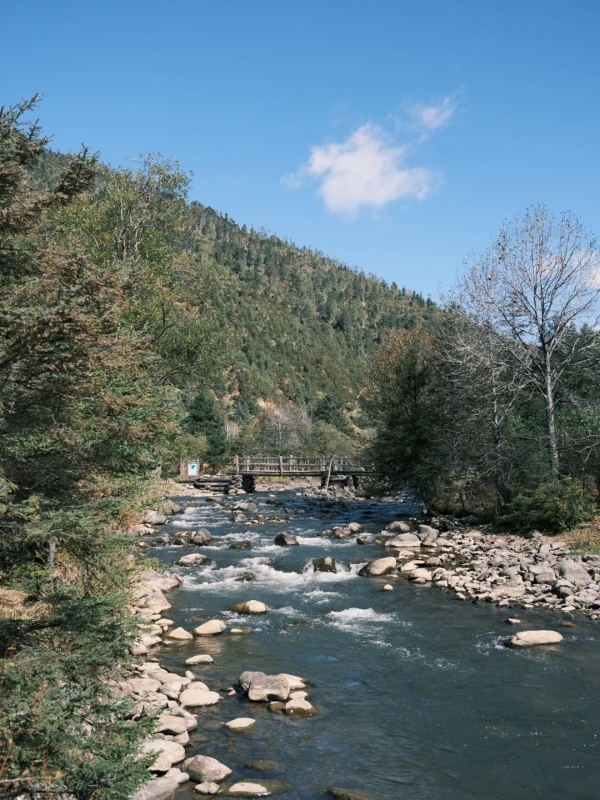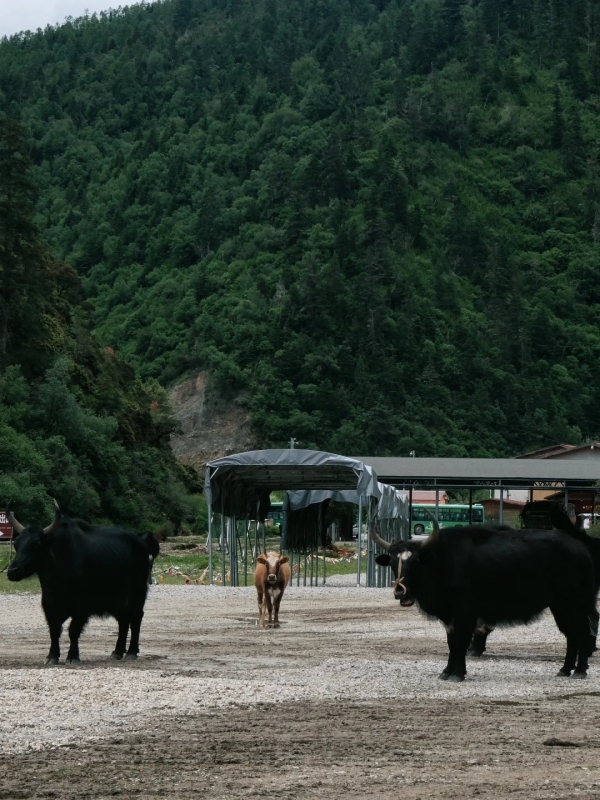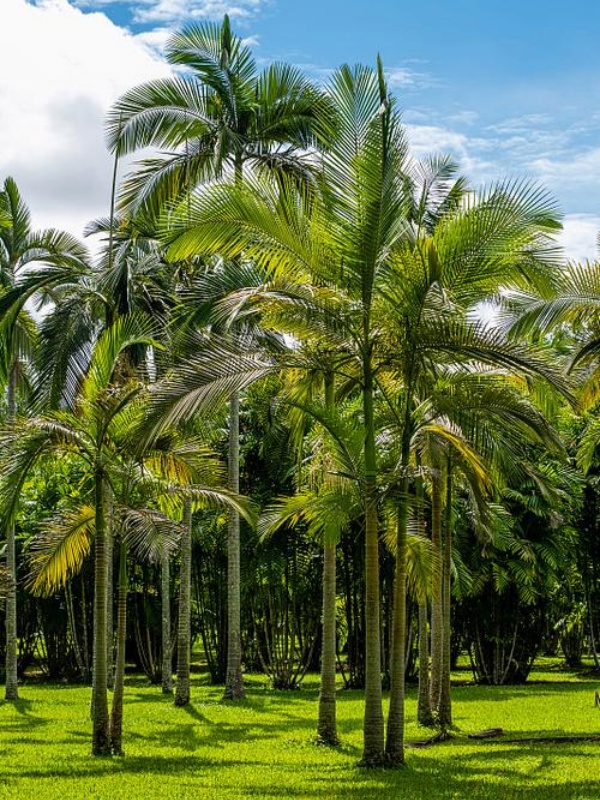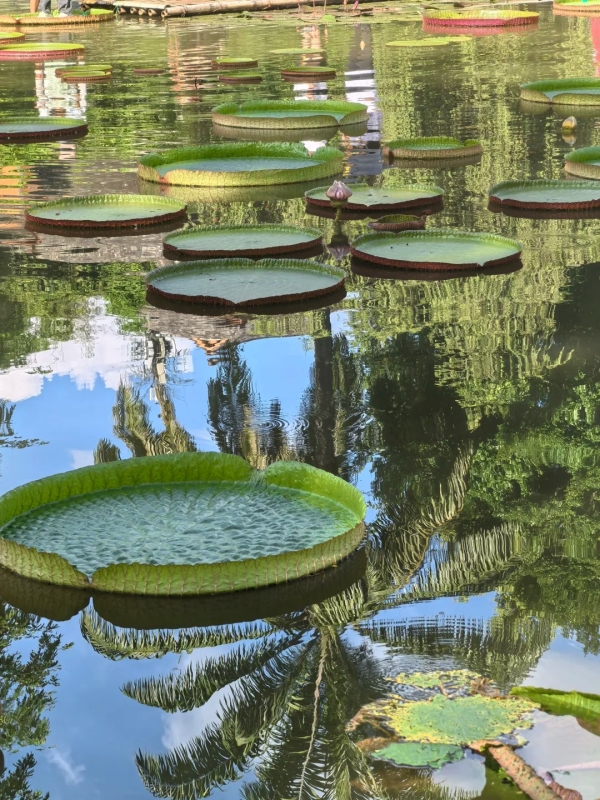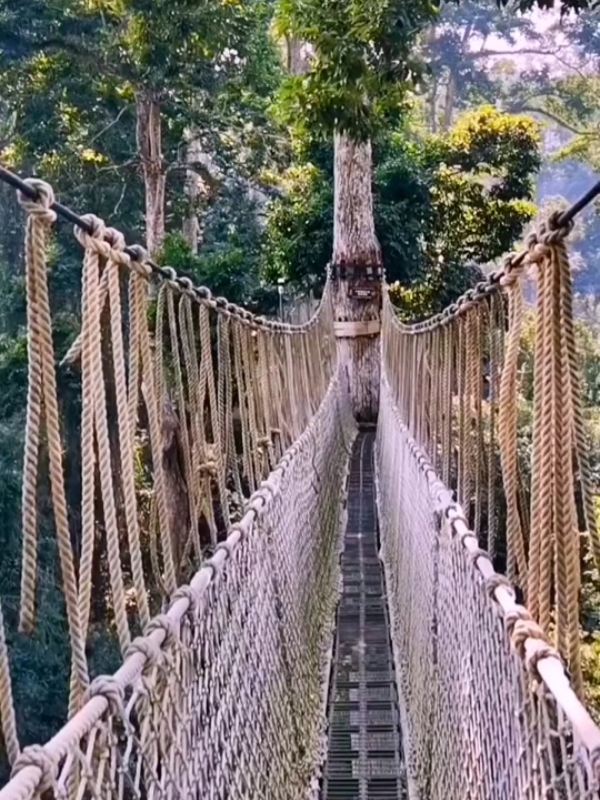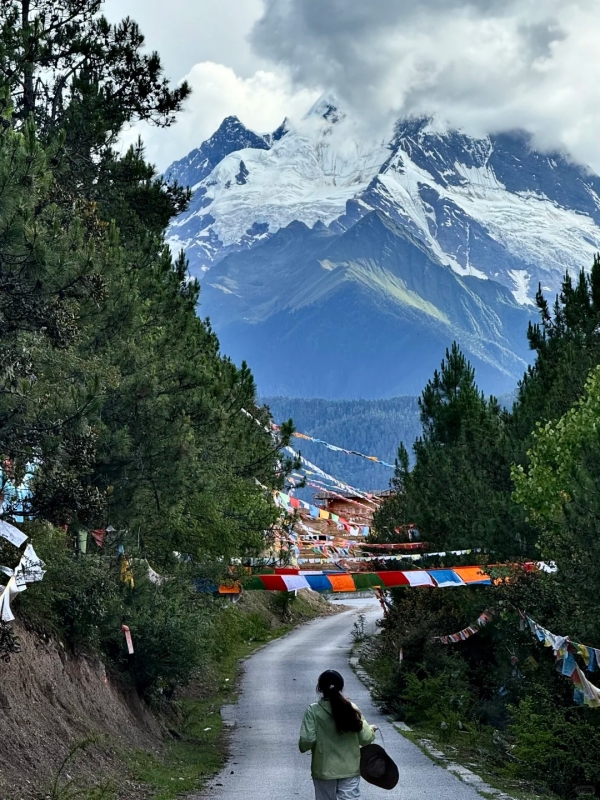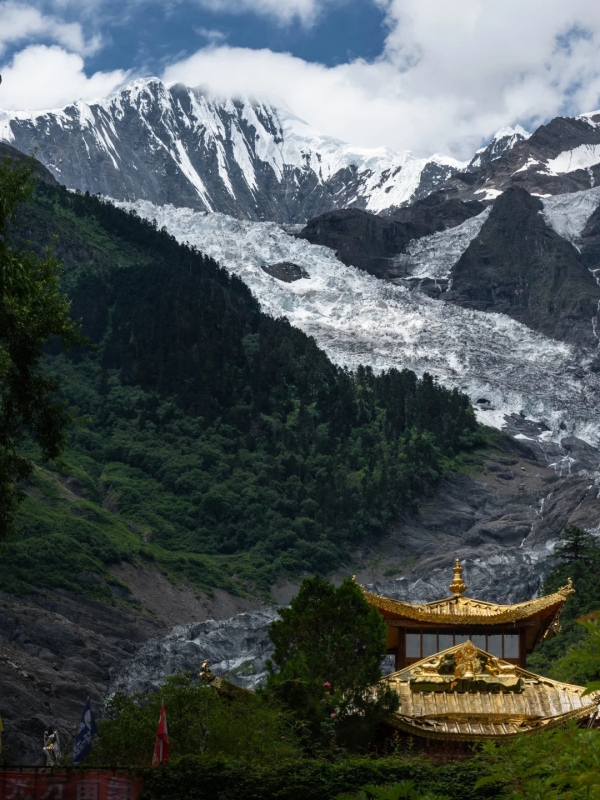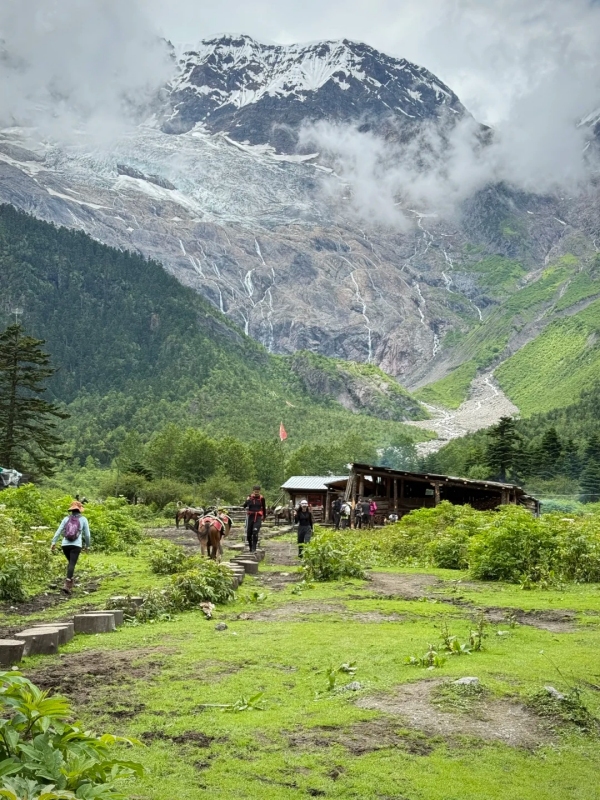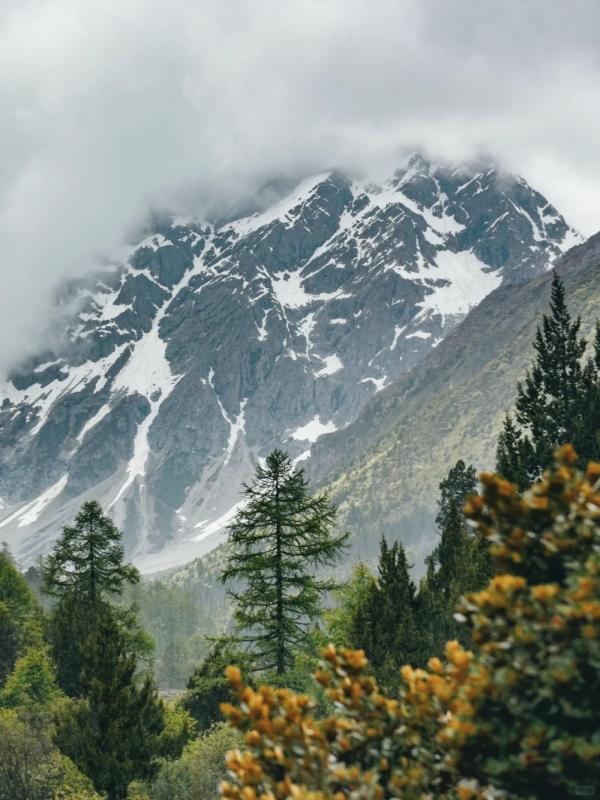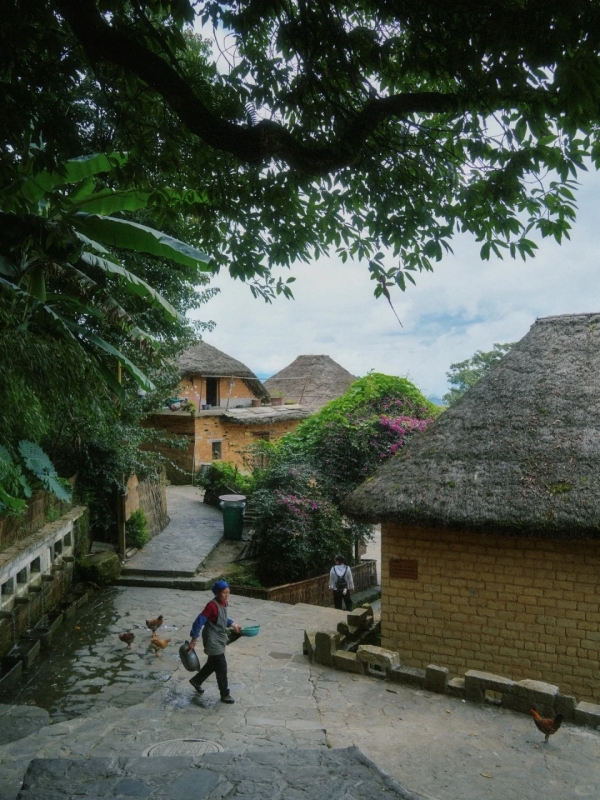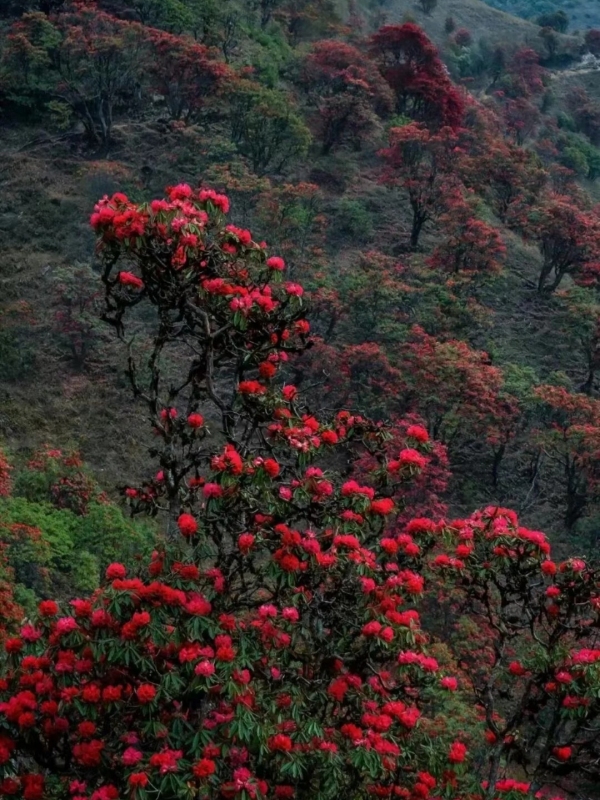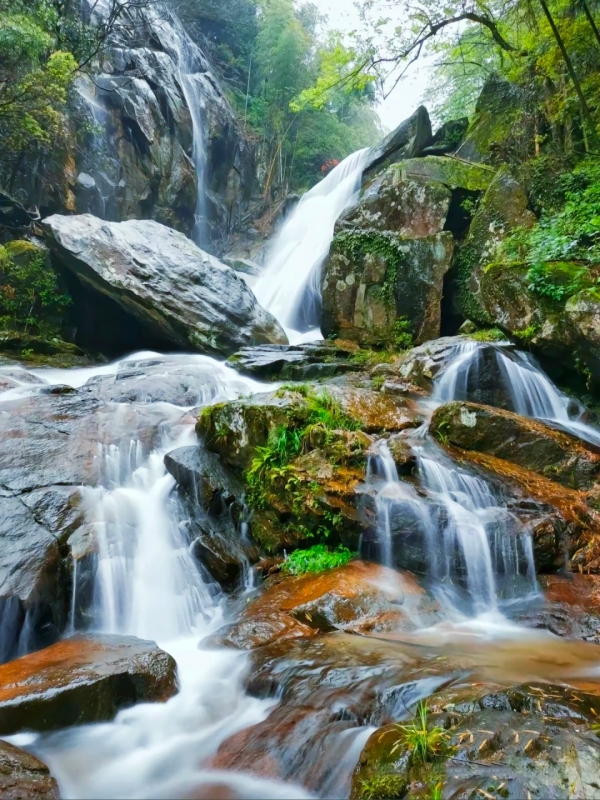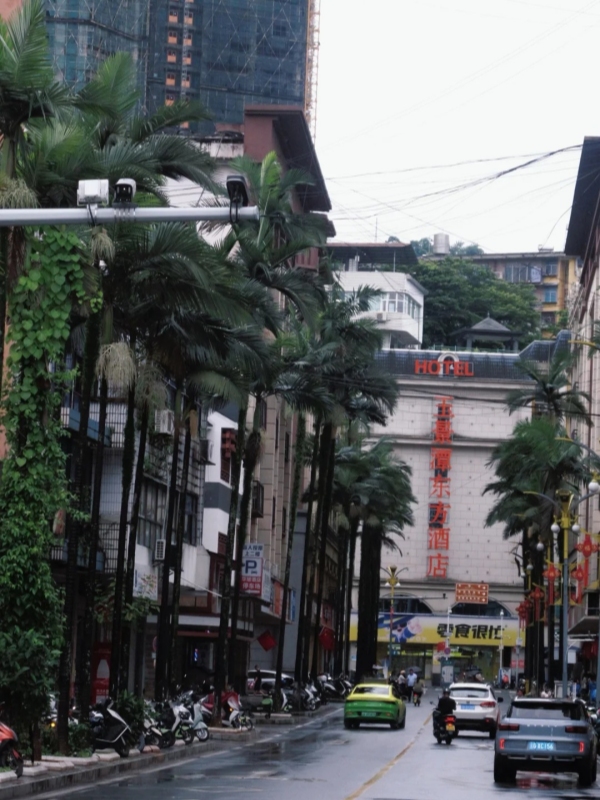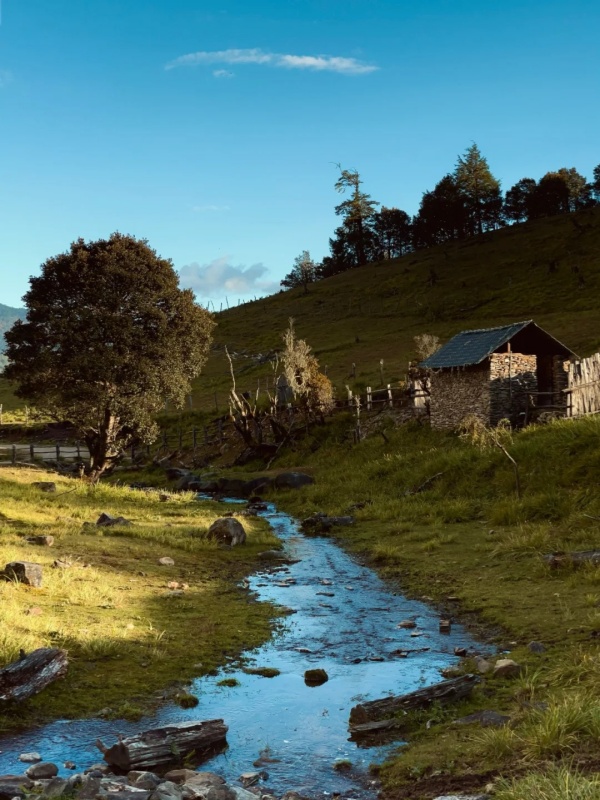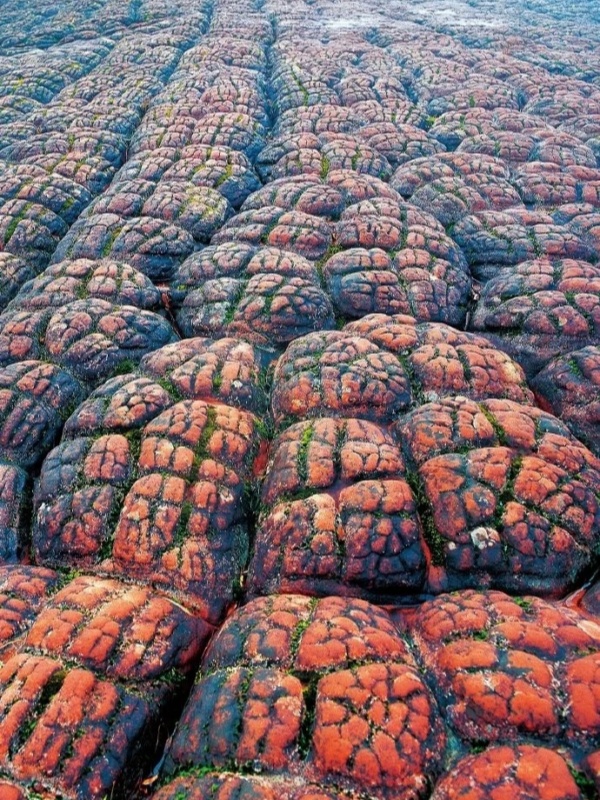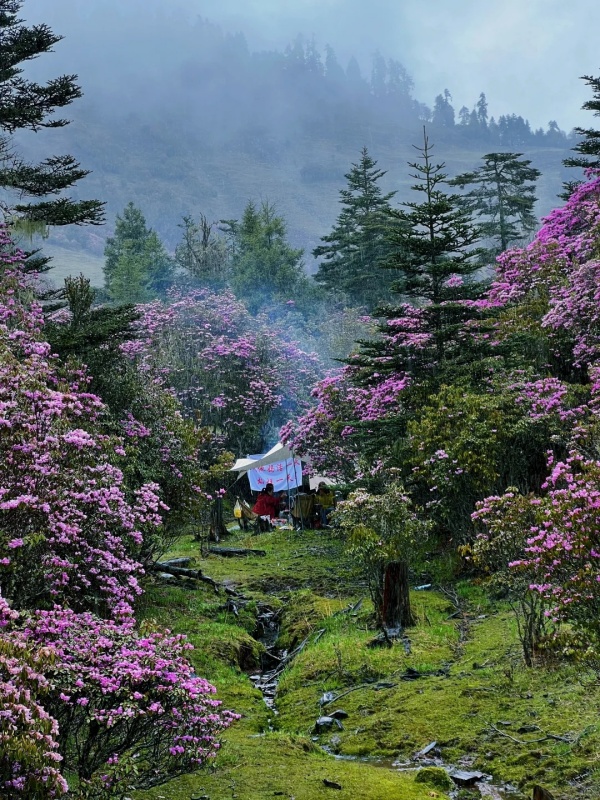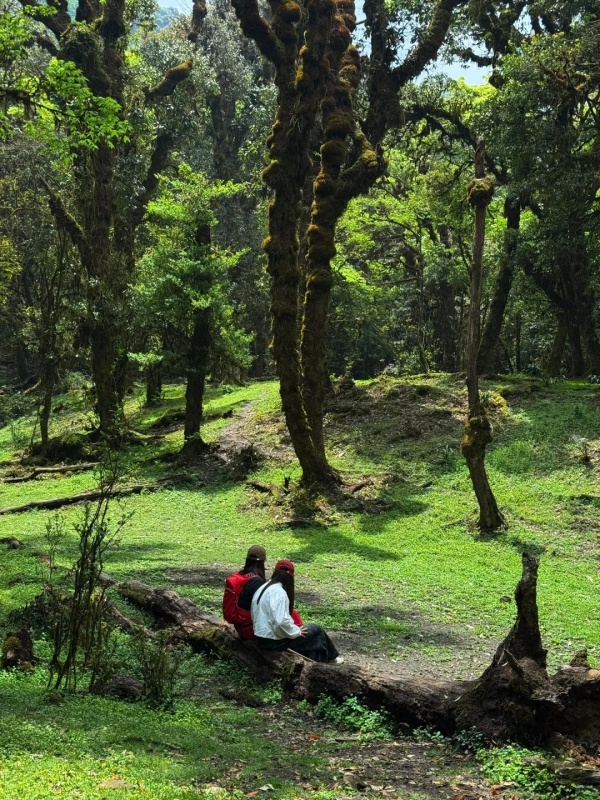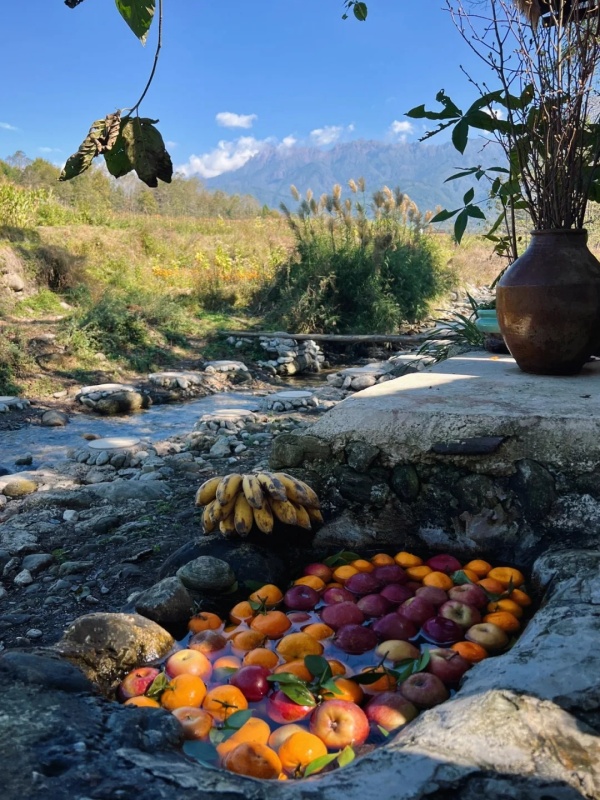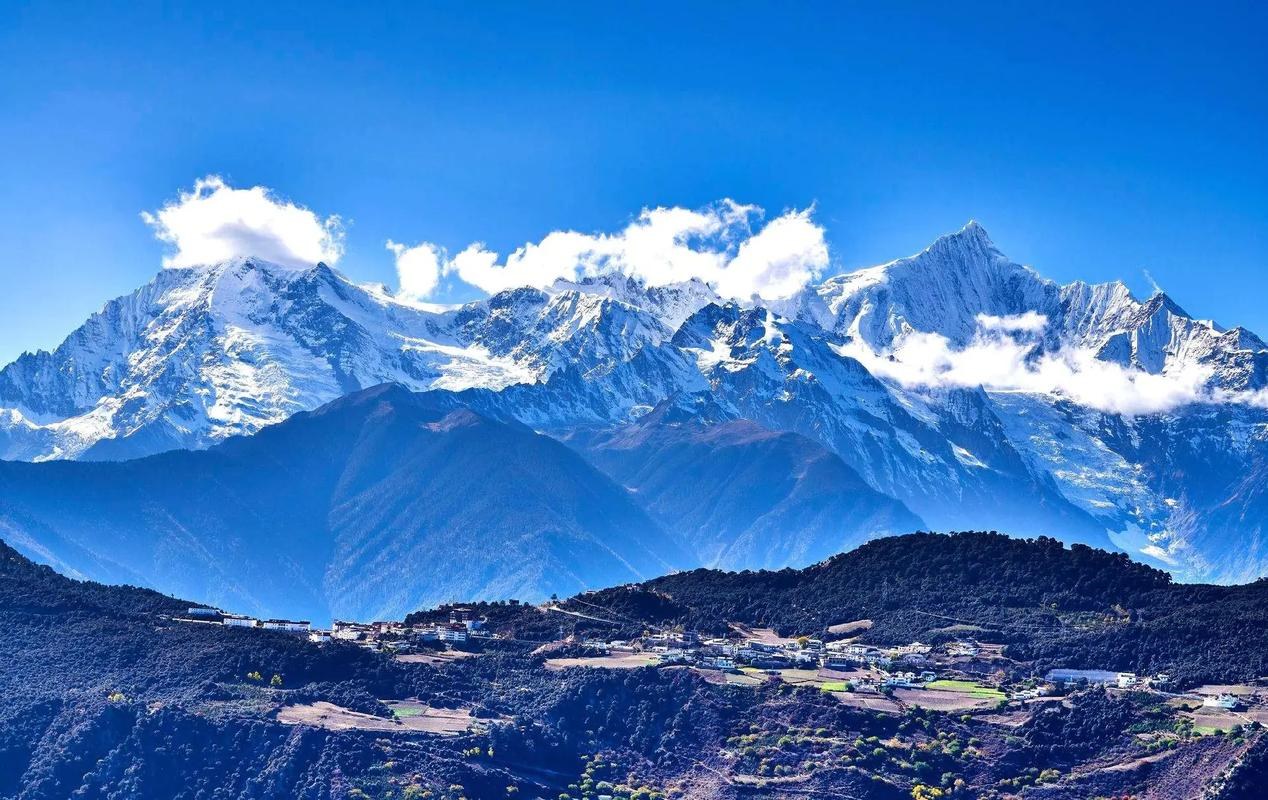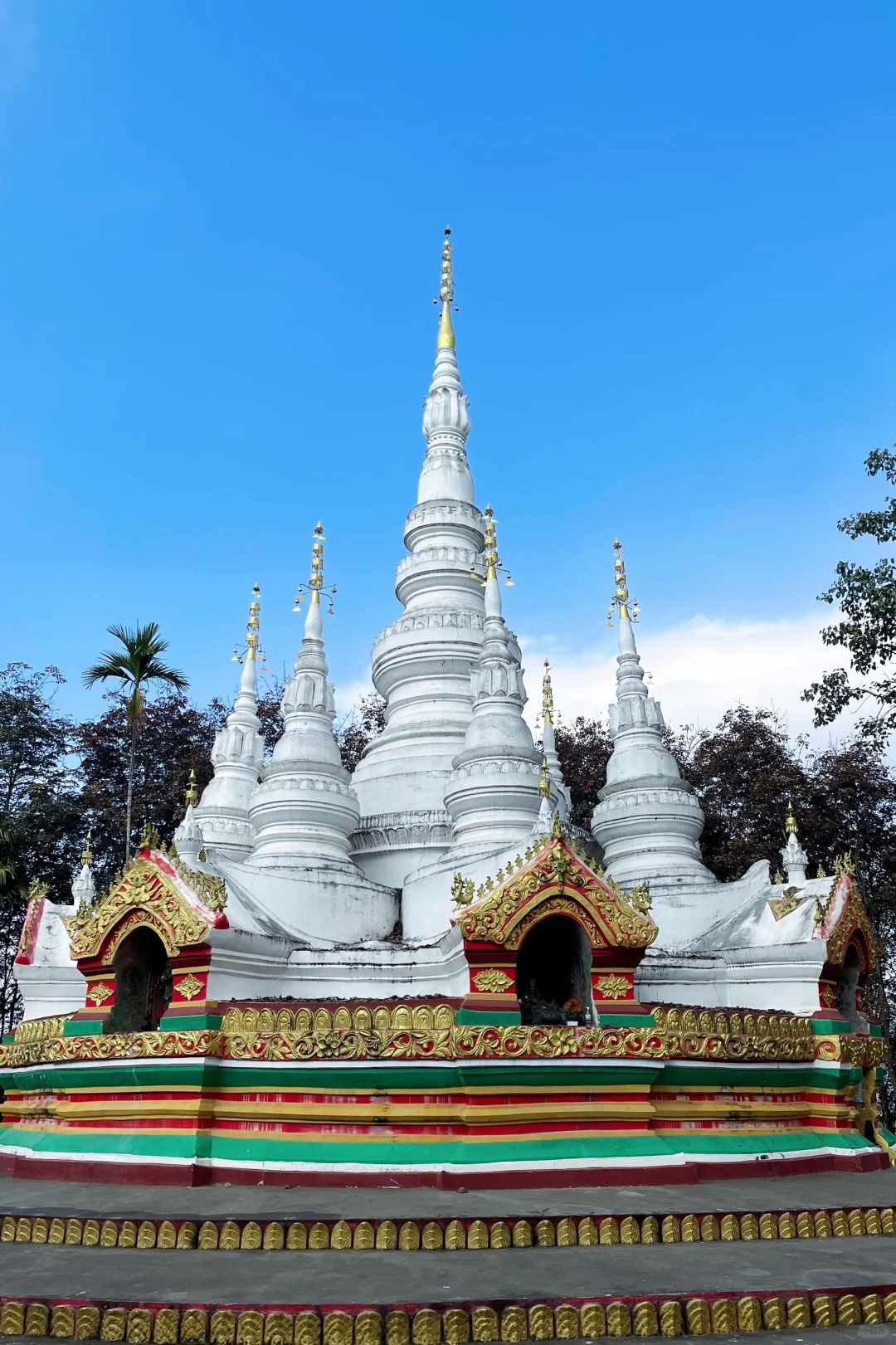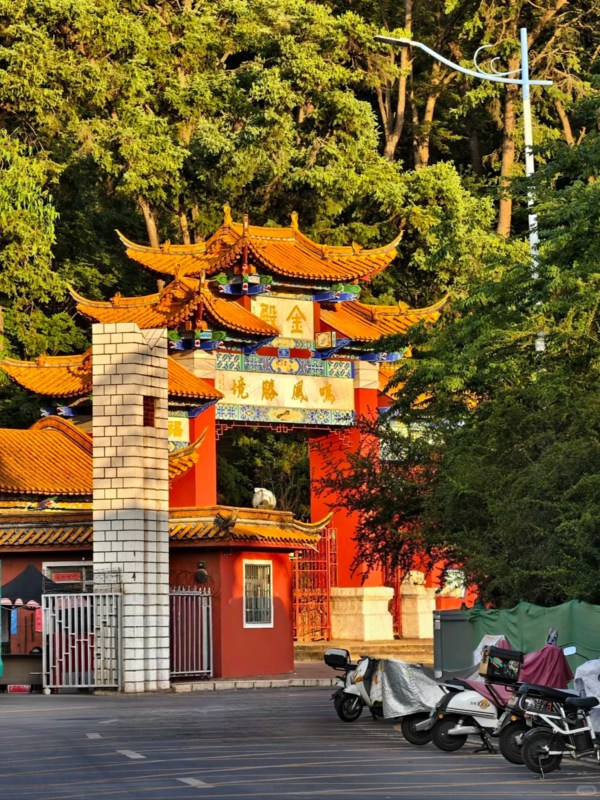
Yunnan Nature
Nestled in the southwest of China, Yunnan Province is a treasure chest for nature lovers. It is an area that has 20% of China's plant life and 30% of its animal life in 0.7% of the land area. What biodiversity! If you’re planning your next eco-adventure, the yunnan national parks are a logical place to start. Tropical jungles, alpine meadows and more abound, so every area is like a new world.
From seeing the endangered black-necked cranes, gliding mightily over the alpine marshes, to catching a glimpse of the elusive golden monkey of Yunnan in the foggy mountain forests, the yunnan national parks have wildlife experiences that you can obtain nowhere else. The altitude ranges from the tropical forests at 500 m.a.s.l. to the snowy summits of 4,500 m. above sea level, enabling you to experience a number of climate zones in one day. Whether you are a die-hard birdman going for 500 species or a family looking for accessible nature walks, Yunnan has something terrific waiting for you!
Quick Info: Yunnan's Top National Parks at a Glance 📊
| Park Name | Highlights | Best For | Best Time | Recommended Star Rating |
|---|---|---|---|---|
| Potatso National Park | China’s first IUCN-certified park; alpine lakes, yaks, cranes | Families, first-timers | May–Nov | ★★★★★ |
| Xishuangbanna Tropical Rainforest National Park | Tropical rainforest, canopy walk, Asian elephants | Eco-tourists, families | Nov–Apr | ★★★★☆ |
| Meili Snow Mountain National Park | Sacred Tibetan mountain, “Golden Sunrise”, alpine ecosystem | Pilgrims, photographers | Oct–May | ★★★★☆ |
| Baima Snow Mountain National Park | Habitat for Yunnan snub-nosed monkeys, alpine flora | Wildlife lovers, hikers | Apr–Nov | ★★★★ |
| Ailaoshan National Park (Planned) | Primeval forests, ancient tea trees, ethnic villages | Nature explorers, researchers | Mar–May, Sep–Nov | ★★★★ |
| Dawenshan National Park (Planned) | Year-round spring climate, waterfalls, primeval forest | Families, hikers | Apr–May, Oct–Dec | ★★★☆ |
| Laojunshan National Park (Integrated) | Danxia formations, alpine meadows, ethnic culture | Hikers, photographers | Apr–Jun, Sep–Nov | ★★★☆ |
| Gaoligongshan National Park (Planned) | “World’s Gene Bank”, birdwatching, vertical ecosystems | Birders, scientists | Mar–May, Sep–Nov | ★★★ |
1. Potatso National Park: The Perfect Start to Your Yunnan Trip ★★★★★
- Potatso National Park
- Lake of Pudacuo
- Pheasants
China’s First National Park Meets the IUCN Standard
Potatso National Park is better known as the first national park in China that is IUCN qualified! Located just 22km from the old town of Shangri-la. The park is located between the height of 3500m – 4000m above sea level and has a surface area of 1300 km 2 , where more than 100 endangered animals are met. Great huh!
Every winter, the black-necked cranes migrate from Tibet to spend their winter quarters in this park. Imagine: mist over the lake in the early morning, moving over the lake surface, and elegant cranes eating close by the water. (No documentary film, but something you can see yourself!)
The park has mainly three parts, interconnected by eco-friendly shuttle buses (also a great way to reduce the environmental impact here!) Shudu Lake has a paved boardwalk of 4 km, at Militang Alpine meadow to see are moving Tibetan herders with yaks and of course wild and colorful flowers in summer. Bita Lake has a forest trail loop of 3.5 km. Facilities are very good and the paths go nicely smooth, very suitable for a first visit! If that first glimpse of Yunnan’s wild beauty got you hooked, dive deeper with Potatso National Park Yunnan.
Wildlife & Photo Hacks
When is the best time to go? Golden hour: 6.30 am to 8.30 am. Go to the parks Bita Lake and walk quietly over the boardwalk, so sooner or later you will see Tibetan eared pheasants, Himalayan marmots sunny themselves on the rocks and all kinds of things moving around of birds etc. The black-necked cranes are always present in the Shudu Lake Wetland from November until March.
Photo hack: A of the Bita bosrijk is almost incomparable beautiful view, alten woods, which are reflected in the water, wonderful! You can take a boat trip (so additionally costs ¥ 50 per person, 30 minutes), that provides a nice perspective from the water level. If you are a fan of colorfully blooming flower meadows, we can recommend Militang in May and June as the flowers are in bloom, totally photo heaven!
2. Xishuangbanna Tropical Rainforest National Park: Yunnan’s "Amazon" ★★★★☆
- Palms Gardens
- Xishuangbanna Tropical Botanical Garden (Menglun)
- Wangtianshu Canopy Walkway
China’s Only Tropical Rainforest National Park
This tropical rainforest, located in the southern part of the Yunnan province, is warm and rainy throughout the year and is home to over 5000 species of plants. Interesting fact: It covers 0.2% of China’s land and harbors 12% of Chinese higher plants—biological paradise! Wild herds of Asian elephants roam, but they can be hard to see, but you might be lucky!
Must See Sites
The Xishuangbanna Tropical Botanical Garden (Menglun), which is under the Chinese Academy of Sciences, it has more than 13,000 species of plants, classified according to region and use. The paths are flat suitable for all degrees of physical preparation. You can wander through tropical fruit groves, medicinal plant sections and rare palms gardens. Entrance fee ¥80, or a combination ticket can be obtained for ¥198, which includes the Wangtianshu Scenic Area.
The Wangtianshu Canopy Walkway is one of the longest in the world (500m) and it is 36m in height above ground level. You can look down from the top part of the rainforest for it is so high that trees are 80m at their tops—that is a beautiful experience to be had!
3. Meili Snow Mountain National Park: The Stunning Beauty of a Tibetan Holy Mountain ★★★★☆
- Meili Snow Mountain
- Feilai Temple Viewpoint
- Hiking in Yubeng
The Top of Tibet's Eight Sacred Mountains and Home to the "Golden Mountain at Sunrise"
The Meili Snow Mountain National Park, located in the northeastern part of Deqing County, which is in the Diqing Tibetan Autonomous Prefecture, is an important Buddhist pilgrimage site for Tibetan Buddhism, and the first in the list of Tibet's Eight Sacred Mountains. The main peak of this holy mountain, Kawagebo, is 6,740m. high! Above the sea level, and the ladder in Yunnan! In all its glory the "Golden Mountain at Sunrise," is a great natural sight! Together it is the final destination of so many travelers!
The park is not only noted for its snow?clad mountains, but protects a complete and perfect alpine ecosystem from the alpine?meadow to the coniferous forests. Tibetan monkeys, musk?deer, and all kinds of alpine flowers inhabit the place.
What to see to not Miss
Feilai Temple View Point is the best place to view the "Golden Mountain at Sunrise." Early in the morning when the sun rises the snow top is gold?en colored! The golden glow lasts about 20 years or 30. It is however to be said that the top is cloud?covered over 300 days of the year, so that a sweet truth any list of Dr. Luck!
A hike in Yubeng will not be forgotten to get the full spirit and meaning of the trip. The natives say, "If you don't take in Yubeng you have lost a great deal of the Meili trip!" The paths from the base of the mountains to the spots of Ice Lake, Divine Waterfall, etc., wind through quaint little villages, where the native Tibetan life is still in the full glow of its brightness.
4. Baima Snow Mountain National Park: Home to Yunnan Snub-Nosed Monkeys ★★★★
- Baima Snow Mountain
- Yunnan Snub-nosed Monkeys
The Kingdom of Alpine Flora and Fauna in the Cold Temperate Zones
Baima Snow Mountain National Park lies in Deqen County. It is a natural watershed between the Jinsha and Lancang rivers and the largest and highest national park in Yunnan, the "Kingdom of Alpine Flora and Fauna in the Cold Temperate Zones." Its first function is to protect the Yunnan snub-nosed monkeys, a rare primeval found only in China. There are now about 3,000 of these left and this park is their greatest habitat.
The park has an enormous range in altitude (2,000-5,430 meters), producing a complete vertical ecosystem from the sub tropical evergreen broad leaved forest to the sparse alpine vegetation. In winter it is a silver world covered with snow, in summer a riot of wild flowers, all fashioning innumerable views.
Key Experiences
Watching the Yunnan snub-nosed monkeys is the great sight. Begin from the observatories in Xiaruo Chuan or Tacheng, and enter the primeval forest with a guide. During the winter months (November-March) the monkeys are at lower altitudes and the percentage of success is 70-80%. That is very good odds.
The Baima Snow Mountain Pass (4,292 meters above sea level) lies on the Sine Tibetan Highway. From here, you can look far into the snow-capped mountain range, total photo opportunity!
5. Ailaoshan National Park (Under Planning): A Primeval Forest Secret ★★★★
- Ailaoshan Village
- Rhododendron Forests
A biodiversity treasure house in the multi-prefecture belt of Yunnan
Ailaoshan National Park is located from Chuxiong City in the north to Luchun County, Honghe Prefecture in the south, touching Chuxiong, Pu'er, Yuxi and Honghe, which is the most important ecological barrier of central Yunnan. The whole area is still in the stage of planning, but its ecological value has already been confirmed, and it is now the best preserved primeval evergreen broad-leaved forest in southwestern China. The black gibbon, cloud leopard and many ancient plants survive here.
The park is not only a beautiful landscape, but also a place where Hani, Yi and other nationalities live in harmony. Terraced fields, ancient villages and the primeval forest intermingle. The harmony of nature and humanity is perfect.
Main Attractions
Qianjiazhai of Zhenyuan County is one of the core areas. Here there are wild tea trees over 2000 years old, which are very important for the study of the origin of tea. The primeval forests in the northwest area are full of dense and gurgling streams, and it is very quiet!
Jingdong Rhododendron Lake has a name for the rhododendron forests growing around it in spring, March and April, the blooming and reflection in the lake are very beautiful, while the Ailaoshan scenic spot in Xinping Gas, the scenic spot of Ailaoshan is also well developed, and the ancient Tea Horse Road ruins and waterfall landscape can be enjoyed in this area.
6. Dawenshan National Park (Under Planning): A Year-Round Spring Secret ★★★☆
- Dawenshan Waterfalls
- Hekou County
A Primeval Forest Gene Bank in Honghe Prefecture
The Dawenshan National Park is located in Honghe Prefecture where there is 660,000 Mu of primitive forest, certainly an important ecological treasure in the southeastern part of Yunnan province! The climate here is good, the annual temperature averages 16.5?. Flowers are still in bloom in mid-winter and in winter the weather is warm and in summer cool, which makes one comfortable in the hot season!
The park has various types of forest ecosystems ranging from tropical monsoon forest to the subtropical evergreen broad-leaved types. There is rare flora and fauna—the cycads, the tree ferns, the silver pheasants, the red jungle fowl, etc. It is a paradise for the nature lover!
High Lights
There is an observation point on the main peak of Dawenshan where there is a good general view of all this primeval forest. When it is covered with mist it is an unreal fairyland! There are streams in the deep mountain valleys that have criss-crossing one through them which forms several waterfalls—Honghe First Waterfall has a large drop. It is certainly impressive!
The County of Hekou is a small border town with the Republic of Viet Nam, where you can drop over for a touch of exotic! The Dawenshan Scenic Area in Pingbian County has made some hikes into it that would be greatly appreciated by the casual hiker who likes to appreciate the fresh air with its negative ion content in the outside world!
7. Laojunshan National Park (Integrated): A Symphony of Danxia & Snow Mountains ★★★☆
- Laojunshan National Park
- Danxia Landforms
- Geladan Grassland
The ancestor of all Yunnan Mountains, a secret world of ecology and culture.
After integration, Laojunshan National Park is centered on Lijiang Laojunshan. The main peak is 4240 meters high, known as "the ancestor of all Yunnan mountains". It is said that the supreme lord Laozi practiced elixirs here, adding rich cultural atmosphere. The most unique advantage of the park is the perfect combination of Danxia landform and alpine ecology, that is, red sandstone produces mushroom rocks, natural bridges, canyons in the sun bright orange, and then green plants, ice lakes, such a beautiful environment.
In addition to the unique geological landscape, there are some rare animals such as golden monkeys and red pandas. In addition, Naxi, Lisu and other ethnic groups live here, and the ethnic customs are extremely rich.
Top attractions
The core of Liming Danxia Scenic Area has many different Danxia landforms, such as the unique "Thousand Turtle Mountain", and the Danxia rocks illuminate bright red at sunrise, so beautiful! You can take a cable car to the observation deck 3200 meters above sea level, where you can see a panoramic view of the canyon and Danxia landscape in all directions. The Geladan Grassland is a typical alpine meadow. In summer, wildflowers bloom all over it, and it is known as the sky grassland. Ideal for camping and hiking! In addition, the glacial lakes in the park are crystal clear, reflecting snow mountains and forests, which are extremely eye-catching!
8. Gaoligongshan National Park (Under Planning): The World’s Gene Bank ★★★
- Gaoligongshan Hiking
- Gaoligongshan
- Bird of Gaoligongshan
A Vertical Ecological Miracle from Tropical to Alpine
Gaoligongshan National Park is still under planning. Its core area, Gaoligong Mountain, is a key part of the Hengduan Mountains—known as the "World’s Gene Bank" and a "World Biosphere Reserve." This mountain acts like a natural barrier, catching warm, humid air from the Indian Ocean. It creates a complete vertical ecosystem from tropical monsoon forests to alpine shrubs—you can experience multiple climate zones in just 10-15km of vertical distance! Crazy biodiversity: 5,726 plant species and 525 bird species, 5 of which are pheasants unique to China.
It’s a sacred place for biologists and birdwatchers worldwide, and a paradise for hiking adventurers. The primeval forests and quiet atmosphere will make you forget all the noise of the city!
Top Experiences
Birdwatching is the star activity here. Baihualing Village is the most famous birdwatching base—local guides know all the bird habitats. During migration season (March-May), experienced birdwatchers can spot over 80 species a day! That’s insane!
Hiking the ancient Gaoligong Mountain Trail is for deep exploration. The trail carries the history of the ancient Tea Horse Road—you’ll hike through primeval forests and visit ancient villages and hot springs. Also, don’t miss the volcanic relics and waterfall clusters in the park!
After those eight Yunnan treasures, the journey continues across the country — Must-See 12 Parks in China.
Planning Your Adventure
When to Visit: Season Comparison of Yunnan National Parks
| Season | Months | Highlights | Temperature | Tips |
|---|---|---|---|---|
| Spring | March–May | Best for wildflowers and bird migration | 15–20°C | Avoid Qingming and May Day holidays |
| Summer | June–August | Great for escaping lowland heat and enjoying green landscapes | 20–25°C | Skip if you hate afternoon storms or leeches |
| Autumn | September–November | ⭐ Best weather, autumn colors, stable skies — the top season | 10–20°C | Avoid National Day Golden Week (Oct 1–7) |
| Winter | December–February | Perfect for crane viewing, clear skies, and lower prices | 0–10°C | Skip if you're cold-sensitive (can drop to freezing) |
Ultimate recommendation: Late September to mid-October (avoiding Golden Week)—stable weather, peak autumn colors, manageable crowds!
Simplified Transportation Guide
Ground Transport:
Private drivers cost ¥800-1,200 per day, suitable for small groups of 3-4, remote yunnan national parks, and when flexibility is needed. Carpooling costs ¥200-300 per day, good for solo travelers to meet others. Public buses ¥50-150 per day, when budget is priority and schedule is flexible. Self-driving ¥300-500 per day plus gas, requires Chinese license and confident driving skills.
Smart strategy: Book 2-3 day driver for remote parks, use public transport between major towns.
Budget Guide
| Budget Type | Daily Cost (¥) | Accommodation | Food | Transport & Activities |
|---|---|---|---|---|
| Budget | 500–700 | Hostel dorms (¥50–80) | Street food (¥25–40/meal) | Public transport |
| Mid-Range | 800–1,200 | 3-star hotels (¥300–500) | Restaurants (¥80–120/meal) | Tours |
| Luxury | 1,500+ | Boutique hotels (¥2,000–4,000) | Fine dining | Private guides & premium experiences |
Don't forget: Altitude medication (¥50-100), gear rental (¥30-50/day), mobile data, emergency cash
Altitude Sickness: Stay Safe
Prevention Checklist
Gradual ascent: Lijiang (2,400m) → Shangri-La (3,280m) → High-altitude parks✅
Hydrate: 3-4 liters daily✅
Avoid alcohol first 48 hours✅
Consider Diamox (acetazolamide): Start 24 hours before ascent (consult doctor)✅
Take it easy: No intense exercise on first day✅
Symptom Guide
Mild symptoms: Headache, poor sleep, shortness of breath → Rest, hydrate, pain relievers—OK to continue
Moderate symptoms: Persistent vomiting, severe fatigue → STOP ascending, oxygen available at visitor centers (¥50-80)
Severe symptoms: Confusion, unable to walk, blue lips → EMERGENCY Descend immediately!
📞 Emergency contacts: Shangri-La People's Hospital (24/7), park visitor centers have oxygen supplies
Responsible Tourism
Leave No Trace Basics
Stay on trails: Alpine vegetation at 3,500m grows extremely slowly—taking shortcuts causes permanent erosion.
Pack out everything: Even fruit peels persist 6-12 months at altitude and teach wildlife bad habits.
Wildlife rules:
- Keep 50m distance from ALL animals
- NEVER feed wildlife (disrupts natural behavior, increases predation risk)
- Speak quietly on trails
- No drones (¥1,000-5,000 fines + confiscation!)
🌍 Remember: Only 3,000 Yunnan golden monkeys remain. Your behavior directly impacts their survival!
FAQs: Practical & Travel Questions for Foreign Visitors
Q: How can foreign travelers buy tickets for Yunnan national parks?
Most parks accept digital payments like Alipay and WeChat Pay, even for foreign bank cards linked through the apps. Trip.com and Ctrip also offer e-tickets with English instructions. Always carry some cash (¥100–200) as backup, since smaller parks may not have stable mobile networks. Traveling across yunnan national parks becomes smoother when you plan online bookings early.
Q: What’s the best way to travel between Yunnan’s major parks?
High-speed trains connect Kunming, Dali, and Lijiang, while long-distance buses or private drivers are best for remote areas like Meili or Gaoligongshan. Renting a car gives flexibility but requires a Chinese driving permit. Joining small English-speaking group tours can save time and reduce planning stress. Transportation between yunnan national parks is easier with clear routes and local drivers familiar with the terrain.
Q: Do I need to speak Chinese to travel around Yunnan?
Not really. Tourist areas have English signs and staff, but in small towns, translation apps like Youdao or Google Translate help a lot. Locals are friendly and patient, so simple gestures or photos often work. Learning basic phrases like “多少钱?” (how much?) makes things smoother. You’ll find that most yunnan national parks provide English maps and bilingual signs for travelers.
Q: How can foreigners handle altitude sickness in Yunnan’s highlands?
Drink plenty of water, walk slowly, and avoid alcohol the first two days in places like Shangri-La or Deqin. Portable oxygen cans (¥50–80) are sold at park entrances and convenience stores. If you feel dizzy or breathless, rest immediately and descend to a lower altitude. Visitors to yunnan national parks should always prepare for altitude changes and pace their hikes.
Q: Are Yunnan’s national parks safe for solo travelers?
Yes, they’re well-organized and patrolled. Shuttle buses and ticket systems ensure clear routes. Just share your location with friends and avoid hiking alone in remote areas after dark. Locals are helpful, and most scenic zones have first-aid stations. Solo travelers exploring yunnan national parks can feel confident with the good infrastructure and friendly community.
Q: What’s the food situation near these parks?
Expect a mix of Tibetan, Dai, and local Yunnan dishes—think yak butter tea, rice noodles, and tropical fruit. Bring snacks or lunch boxes, since food inside parks can be double the price. Vegetarian options are available but may be limited in small mountain villages. Sampling local flavors adds another layer to your yunnan national parks adventure.
Q: How can I book accommodation that accepts foreigners?
Most hotels listed on Trip.com or Booking.com clearly state “Accepts Foreigners.” In smaller towns, choose registered hotels rather than homestays without official permits. Showing your passport at check-in is mandatory for registration. Booking early near yunnan national parks helps secure the most convenient and legal stays.
Q: What’s the best way to stay connected while traveling in Yunnan?
Buy a local SIM card at airports or use an eSIM for China. China Mobile and China Unicom have strong coverage even in remote areas. Public Wi-Fi is common in hotels and cafés, but use a reliable VPN if you need access to foreign websites. Staying connected while exploring yunnan national parks makes navigation and translation much easier.

